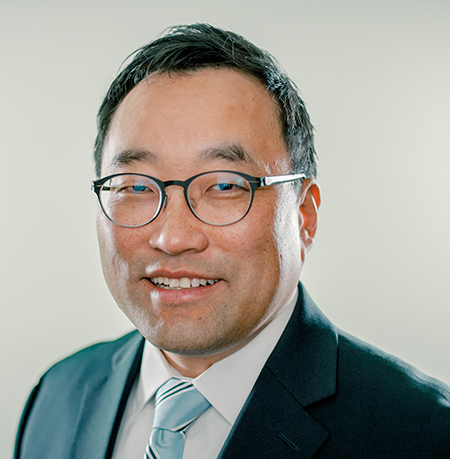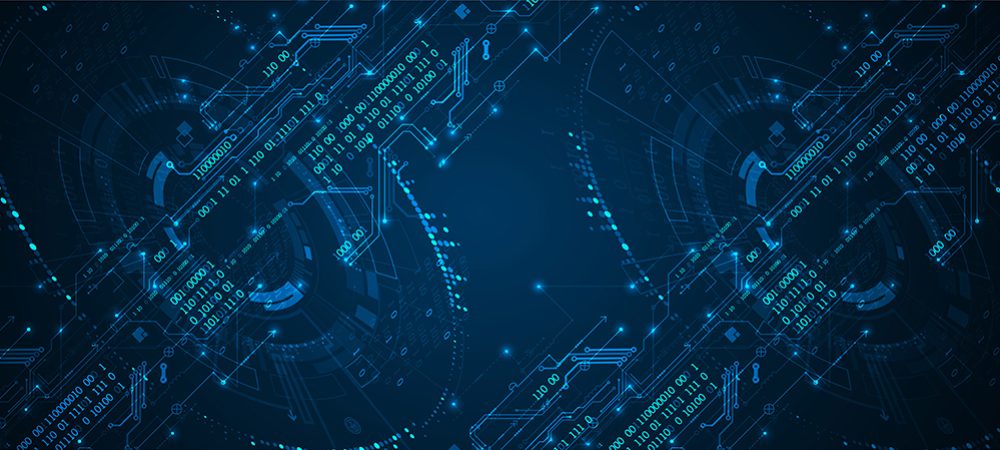On the lighter side of things, we ask Thomas Phelps IV, CIO at Laserfiche and Chair of Innovate@UCLA, what makes him tick.

What would you describe as your most memorable achievement?
One recent achievement was spearheading the strategy and analyst relations initiatives with a fantastic fusion team, which culminated in Gartner naming Laserfiche a visionary in the 2021 Gartner Magic Quadrant for Content Services Platforms. We were also named a Customers’ Choice in the 2021 Gartner Peer Insights Voice of the Customer: Content Services Platforms report. It was an exciting milestone for our company and a great collaborative effort by so many talented colleagues.
I also feel very blessed to see people grow in their careers and get promoted at Laserfiche. I believe we all need to create an on-going culture of mentorship, advocacy and sponsorship that helps individuals to achieve their career aspirations. I was very proud of our employees who were recently promoted in January.
What first made you think of a career in technology?
I was an avid fan of Star Trek starting from my middle school days – the original series, TNG, DS9 and Voyager. I fell in love with this alternate universe that was replete with computers, interactive touch screens and the Star Trek Communicator.
In Star Trek, chronic pangs of hunger and poverty – which I experienced growing up in an orphanage and later as an adopted child – were long solved on Earth. It inspired me to get jobs delivering newspapers or detasseling corn in the hot Iowan cornfields to save up for my first computer in high school.
I’m not sure if Star Trek is what led me to Motorola after graduating from high school, but the stark reality was that I couldn’t afford to pay for college. Instead, I found a job at a Motorola factory making two-way radios. After developing a six-sigma based quality tracking system-using computer skills that I taught myself, I was soon promoted to being a quality inspector for a new assembly line that used robotic SMD machines. Years later, I helped start up a new Motorola Internet Software Products division led by the Motorola CIO. I was elated to hold my first Motorola StarTAC flip phone – albeit it wasn’t for me as I purchased it for the CIO.
After graduating with an MIS degree from the University of Texas at Austin, I started my PwC career in technology risk consulting. And of course, I splurged on my very own Motorola StarTAC phone.
What style of management philosophy do you employ with your current position?
I believe in both transformational and servant leadership. It’s important to set a clear vision, provide strategic direction and inspire a culture of continuous innovation.
What’s helped a business be successful today may not be the catalyst for future growth. Change is inevitable. Risk-averse organizations that do not innovate their business, products, processes and technology may be quickly outpaced and disrupted by competitors and new entrants.
Leaders should empower others to affect change and encourage ideation. But to truly empower, you need to give people the authority to make decisions, provide stretch opportunities, and facilitate coaching and mentorship. Managers and leaders should also prioritize the needs of their teams first and foremost. This involves listening, empathy, authenticity and truly caring for others – through not just encouraging words, but through action.
One soft skill that often is an impediment for career growth is public speaking skills – especially if you aspire to become a team lead, director or vice president. I recognize that many introverts look forward to public speaking as much as they enjoy going to their dentist.
To help others become a more confident communicator, I find them opportunities to speak in more comfortable settings and provide coaching and guidance. Alternatively, I may commit to a speaking engagement to help provide opportunities for other people to gain confidence in public speaking as a co-speaker – even if they only want to speak for five minutes. Through this approach, I’ve seen nervous speakers – even CIOs -transform into intrepid speakers that command an executive presence on the stage.
What do you think is the current hot technology talking point?
Whether it’s called hyperautomation or next level process automation and virtualization, businesses are looking to rapidly automate business processes at scale. This involves a combination of AI, Machine Learning, RPA, IoT, content services platforms and low-code tools.
Laserfiche has been talking about the democratization of IT for years. We’ve seen this dramatically accelerate hyperautomation initiatives starting in 2020 with the need to rapidly accelerate to a digital business. Today, that conversation has shifted to sustaining a distributed, hybrid workforce that can now work from anywhere.
Another hot technology topic is the metaverse and the extent that this will become more pervasive in our lives. It was a topic of a recent conversation that I had with the CEO of a video publishing studio. Metaverse was one of the reasons cited by Microsoft for its planned US$69 billion acquisition of Activision. Beyond just gaming, we will all soon have a digital persona- an avatar – in a virtual world with social networks where we can work, learn, play, socialize and shop.
How do you deal with stress and unwind outside the office?
The pandemic was a wakeup call for me. I was leading our crisis management team that was responsible for our company’s response to the pandemic, and yet my own health issues made me susceptible to falling gravely ill from COVID-19. I was also teaching a masters-level business course at the University of Southern California and didn’t want a potential illness to impact my students.
I decided to make some immediate changes for a healthier lifestyle. I found over the years that exercise and a vegetarian-only diet just doesn’t work. And I didn’t have the luxury of time when hard health pivots were required in a pandemic. Instead, it took just four months to lose 30 pounds – and conquer hypertension, prediabetes and other chronic health issues – with a low-cost, simple technique summarized in two words. Eat. Less.
Today, I exercise at least five days a week – whether it’s lifting weights, kickboxing or playing tennis. I also spend more quality time with family and learn new recipes for meals. These changes help me manage stress more effectively and create better work-life balance.
If you could go back and change one career decision what would it be?
One of my favorite Star Trek quotes is from Captain Jean-Luc Picard who said: “Let the dead rest – and the past remain the past.” I don’t dwell on second-guessing myself with ‘what if’ thinking on past career decisions.
More importantly is learning from those past decisions and applying them to current ones. Or as Spanish philosopher George Santayana said: “Those who cannot remember the past are condemned to repeat it.”
What are the region-specific challenges when implementing new technologies in North America?
Region-specific challenges include evolving business practices and implementing technologies in response to data privacy regulations on the collection, use and sharing of consumer data. Companies will need to comply with state-specific regulations such as the California Privacy Rights Act, along with varying data privacy requirements in Canada, Europe, Australia, China and other regions.
Other challenges include the lack of broadband network access and bandwidth – especially in rural areas-that may impact the user and customer experience with new digital tools and services. Also, there’s a growing disparity with the digital divide and social and learning inequities that has been magnified during the pandemic.
What advice would you offer somebody aspiring to obtain a C-level position in your industry?
As you move from being a technology manager to a C-suite position, the ability to clearly articulate and execute on a vision and strategy for a technology-enabled business transformation is critical. This includes digital technologies that create new products, accelerate growth, delight customers, create an engaging employee experience and serve as a catalyst to disrupt entire markets.
It’s a fundamental shift from being solely a technologist to thinking like a business owner. Look for ways to create value for customers, employees and shareholders while managing risk appropriately-especially technology, cyber and regulatory compliance risk. A good litmus test is an ability to read and understand financial statements and SEC filings.
Click below to share this article

